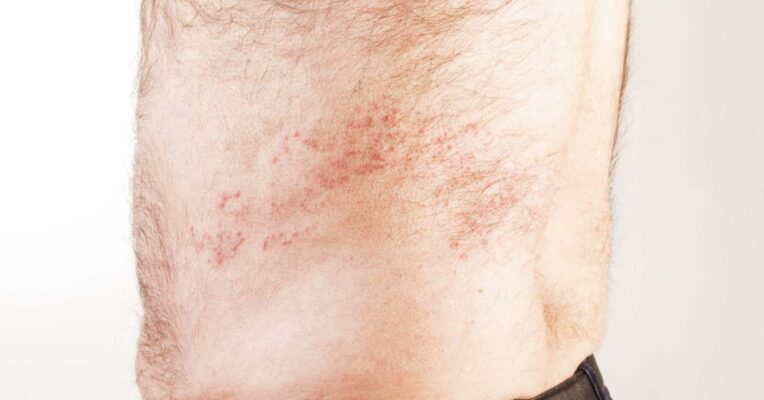However, there are some differences between the two. Shingle infections present as a painful rash that progresses into a blister filled with fluid, while chickenpox presents as itchy blisters. The blisters of shingle infections dry out after about a week to form a crust. Furthermore, chickenpox is usually more widespread in the body, unlike shingles which affect just one side of the body.
A similarity between the two is that they are both contagious. However, a shingle infection is only contagious in the blister stage; you cannot spread the virus when you only have the shingle rash. Chickenpox is generally considered more contagious compared to a shingle infection. Both are treated with antiviral agents. Shingles creams contain antiviral agents and are more popular in treating an infection. There are a variety of creams available; therefore, you should consult your dermatologist on the best cream for shingles in case of an infection.
Causes
Varicella-zoster, a virus that belongs to a group of viruses known as herpes simplex, is the cause of the infection. Shingle infection can occur in anyone who has suffered from chickenpox at some point in their life. This is because the varicella-zoster virus remains inactive in your nervous system and can reactivate later in life. During its reactivation, the virus travels to the skin through nerve pathways to cause infection.

However, not everyone with a history of chickenpox is guaranteed to have the infection. The reactivation usually depends on age and your immune system. A weakened immune system, such as that of a person who has HIV/AIDs, is more likely to get infected compared to a healthy immune system. Similarly, it is more frequent in older adults compared to young adults and children.
Infection can occur following a latency of the virus or due to contact with a person with the infection. Direct contact with the open sores after the shingle rash forms a blister is a guarantee of infection to anyone who lacks immunity against chickenpox. This is why it is advisable for people with a weak immune system such as HIV/AIDs patients, children, and pregnant mothers to get a chickenpox vaccine.
You are more at risk of an infection if you are:
- Undergoing chemotherapy as it lowers the ability of your immune system to fight off diseases
- Taking steroid medications as strong steroids lower your immune system making you susceptible to infections
- Living with a chronic condition that lowers your immune system like HIV/AIDs
- Older than 50 years
- Under extreme stress
Symptoms

The symptoms of a shingle infection present differently at the early stage of the disease and later stages. At the early stages, it will present as a rash, fever, chills, redness in the affected area, headache, stabbing pain, itching, and a tingling sensation below the skin. These symptoms progress to blisters that are filled with fluid. After about five days, the blisters dry and form a crust.
If left untreated, the condition can develop complications such as:
- Loss of vision – Although rare, the loss of vision due to a shingle infection can occur. This occurs with ophthalmic shingle infections, that occur around or in the eye. The infection can cause a secondary infection that could damage your vision.
- Postherpetic neuralgia – This refers to the presence of pain long after the complete healing of shingle blisters. It usually occurs due to the misfiring of neurons. Among five people with a shingle infection, one of them is likely to experience postherpetic neuralgia.
- Secondary skin infections – Secondary skin infections are usually bacterial. Inadequately treated blisters are a trigger of secondary skin infections, especially when you constantly scratch the affected areas.
- Complications of the brain. – These complications usually occur when certain nerves are affected during the shingle infection. Complications of the brain can include paralysis of the face, encephalitis, and hearing difficulties.
